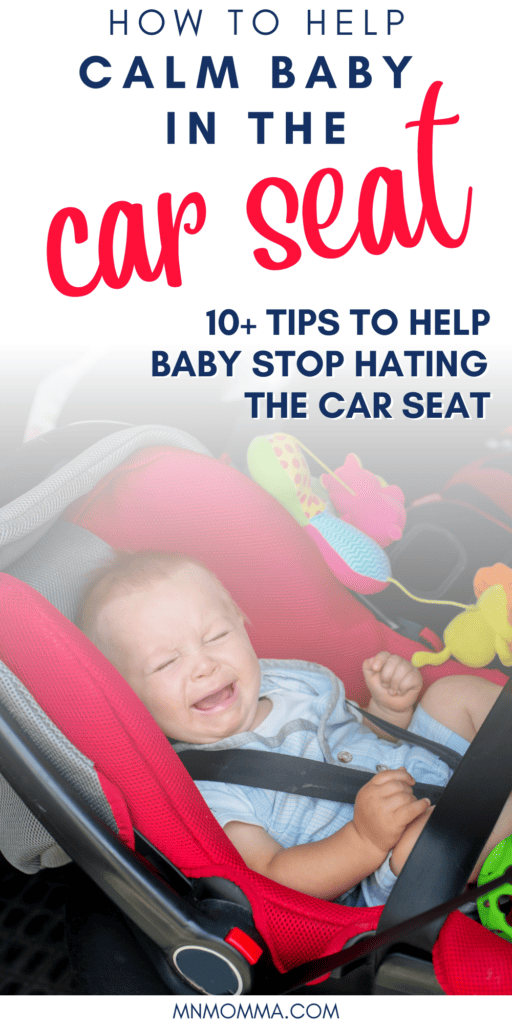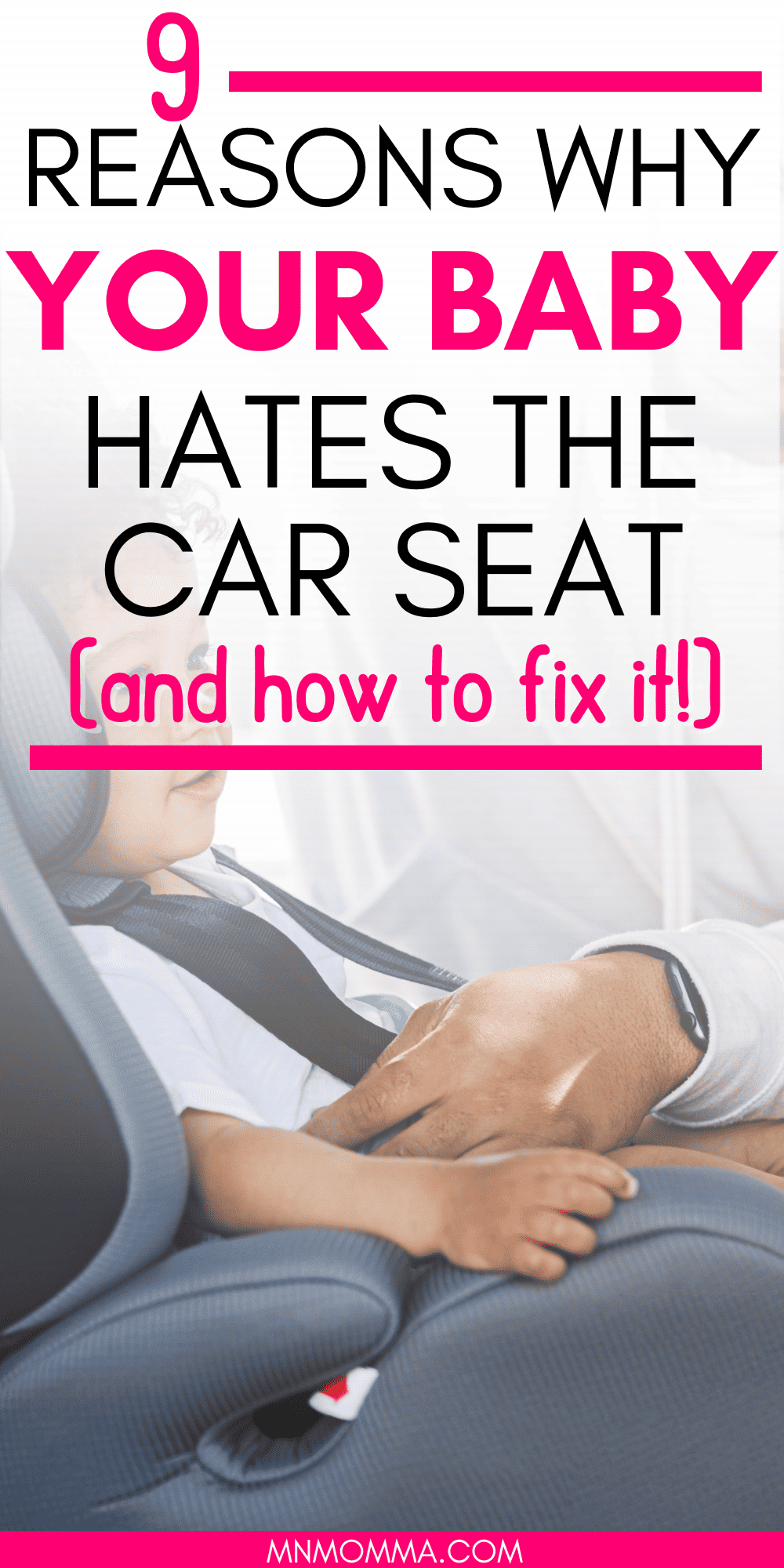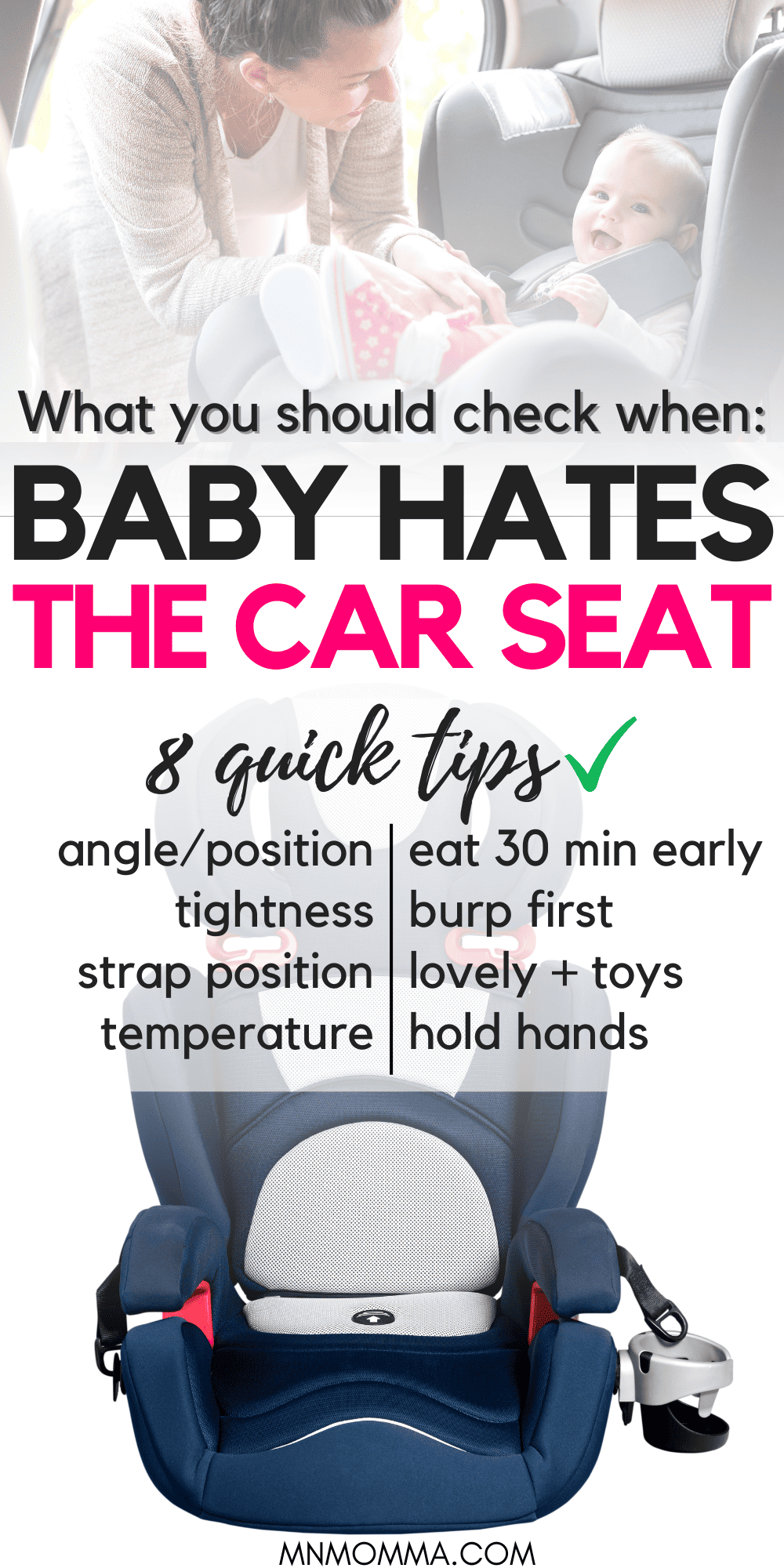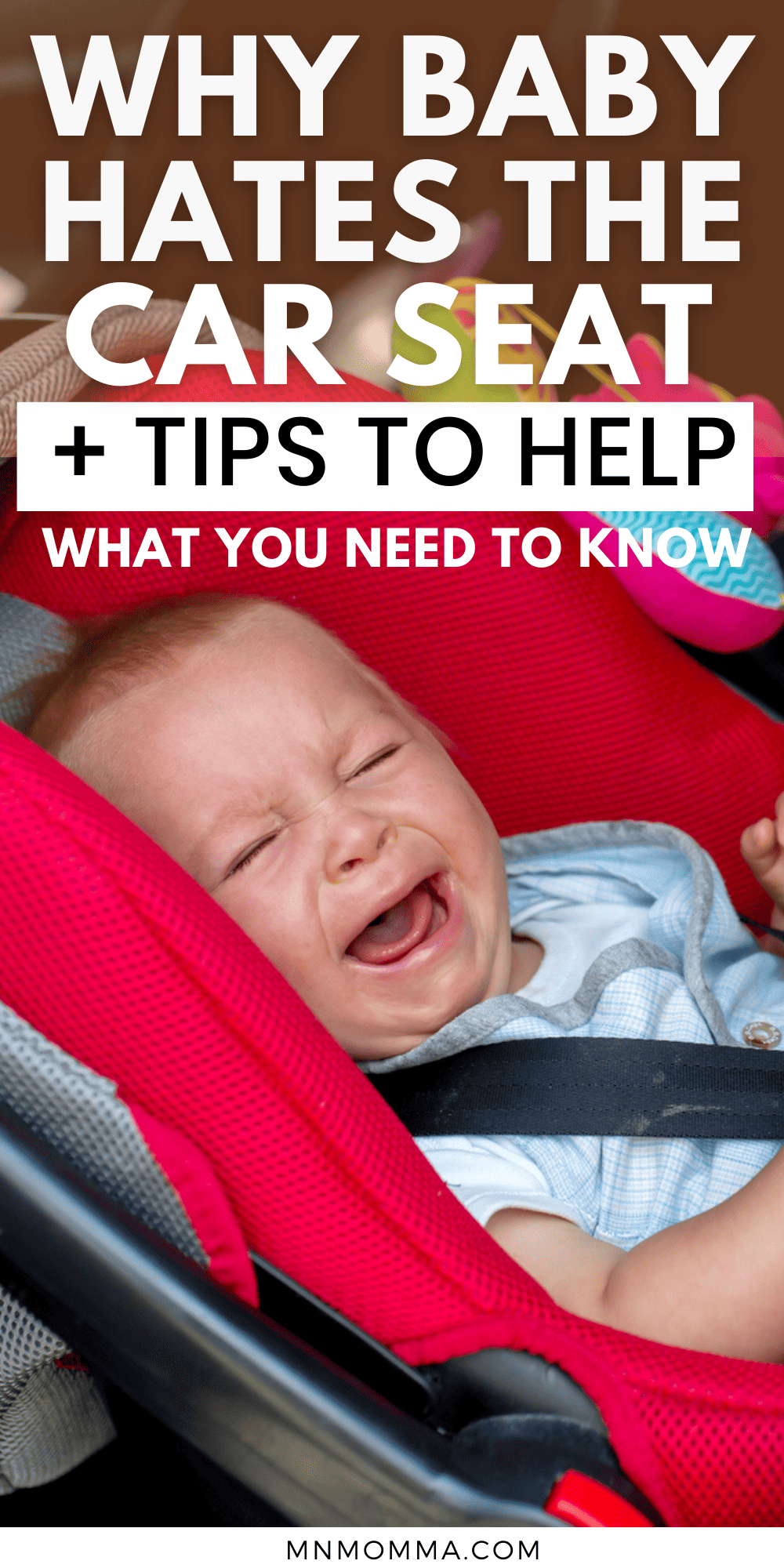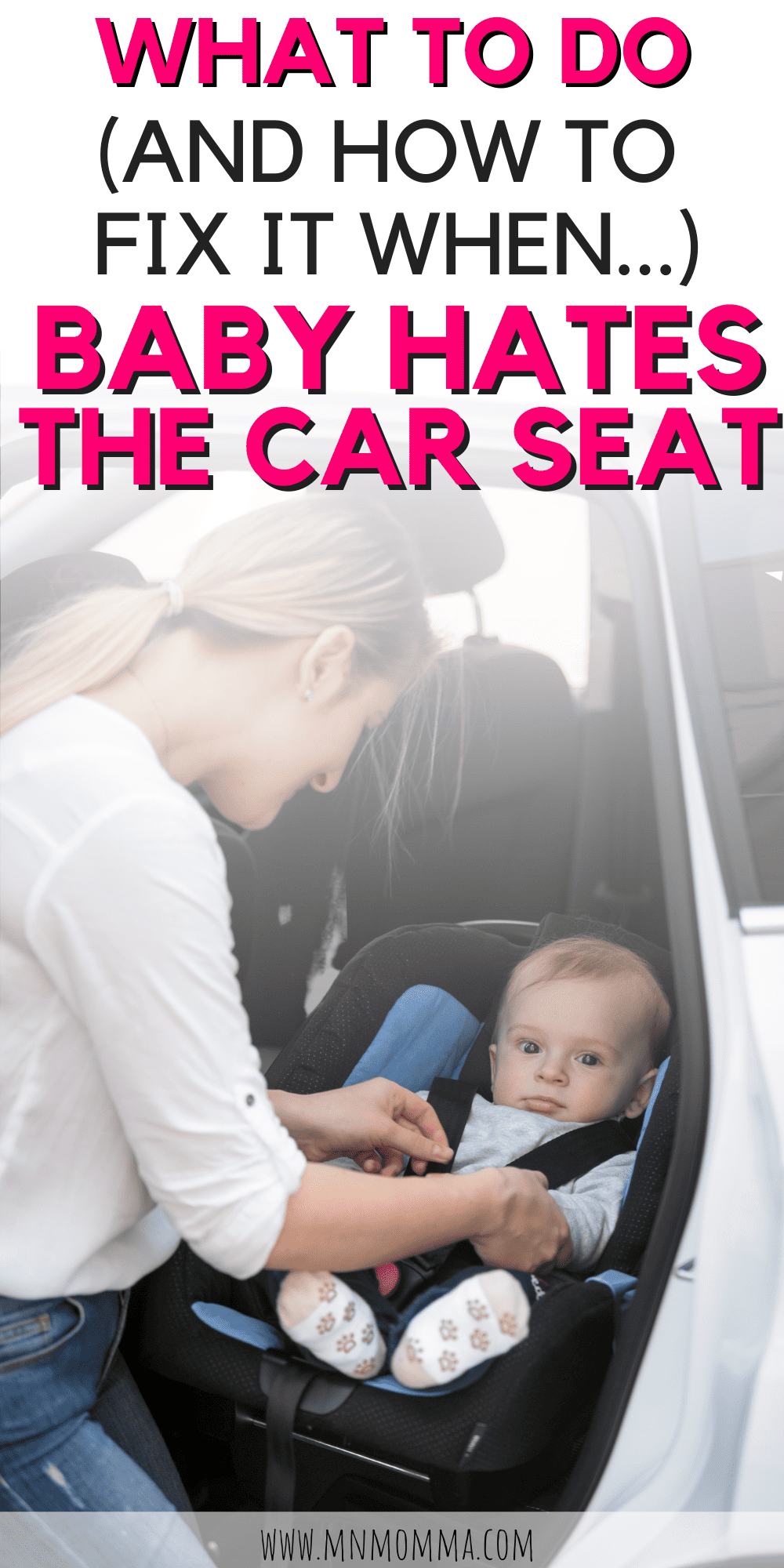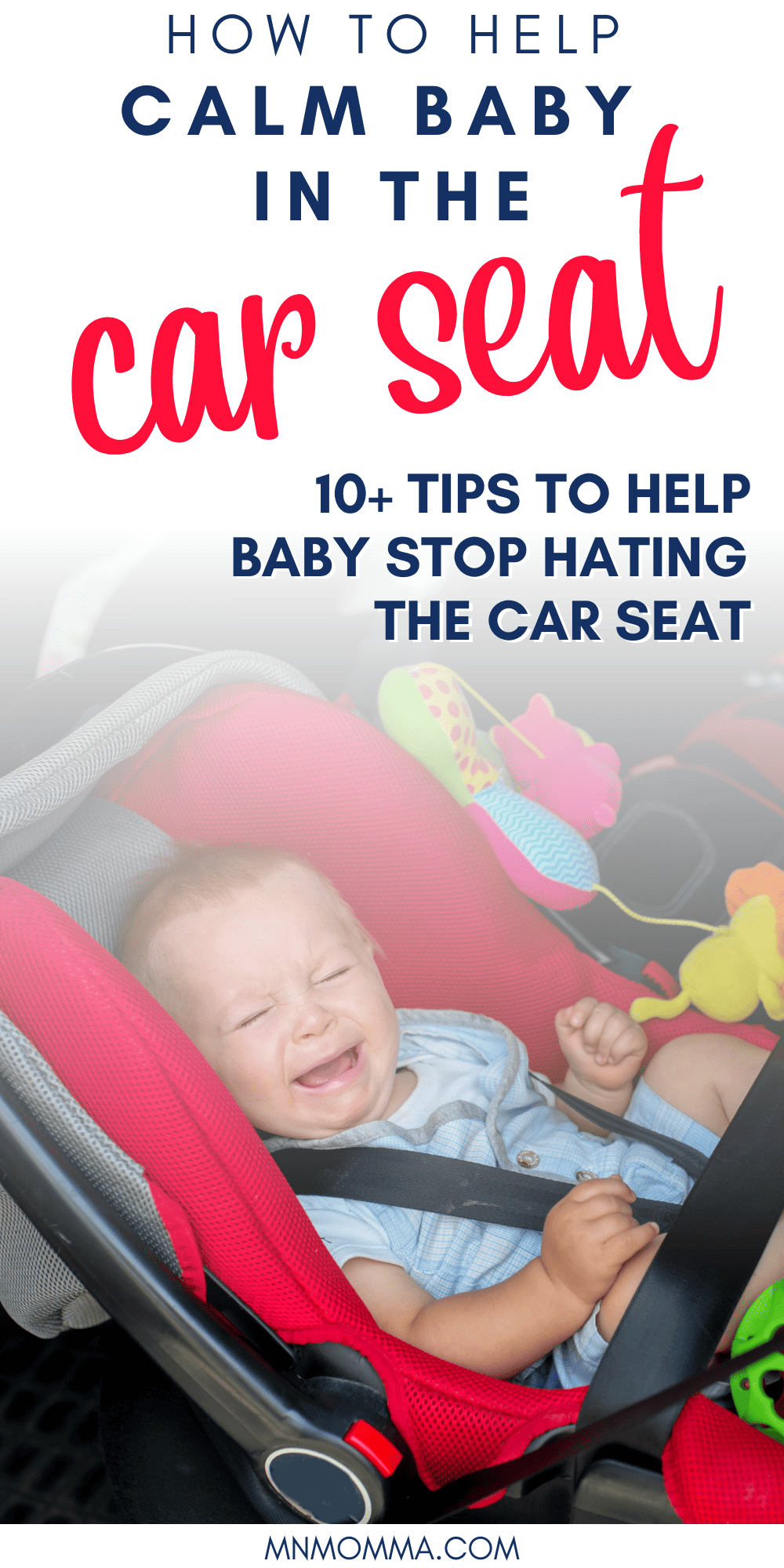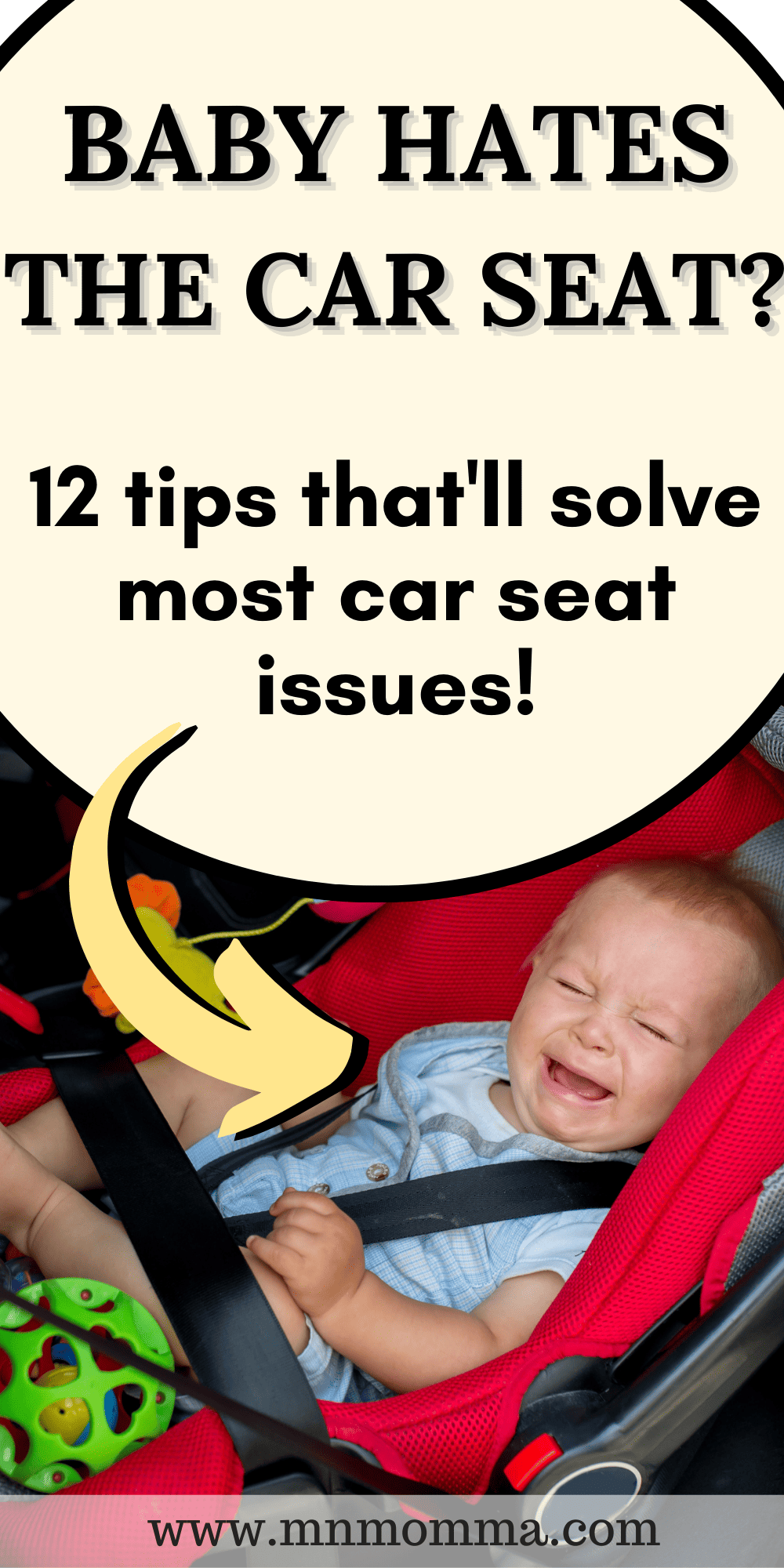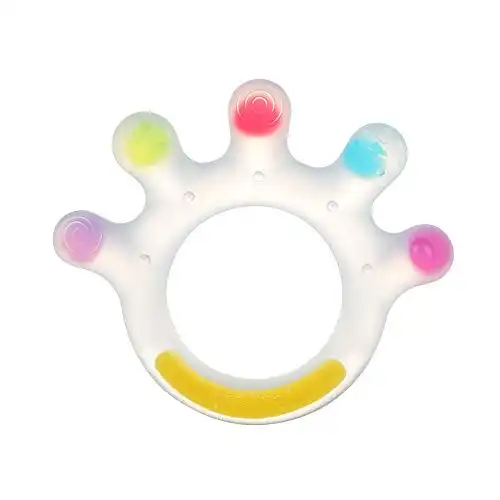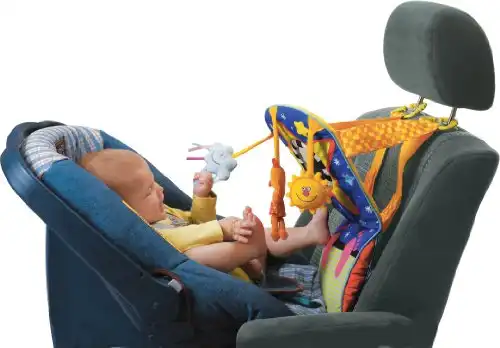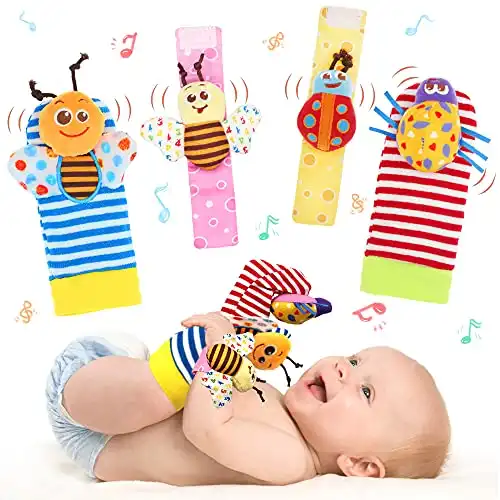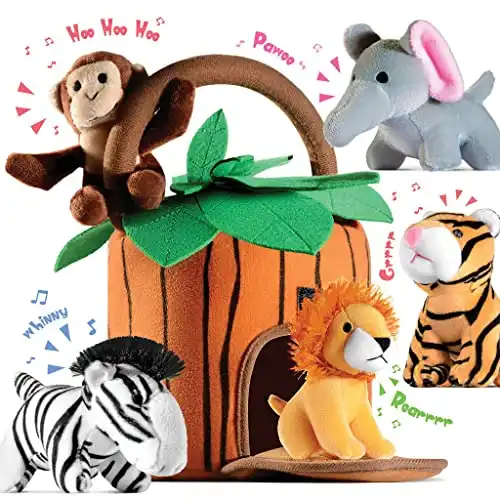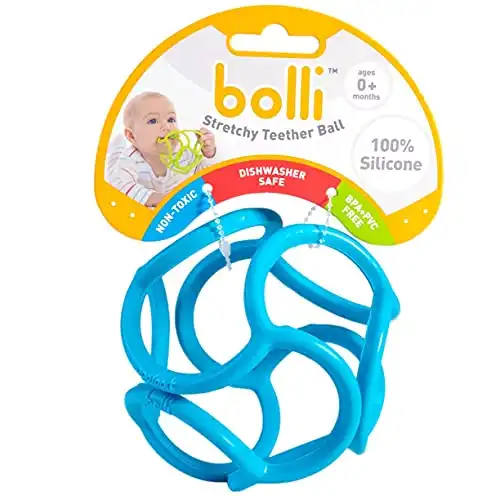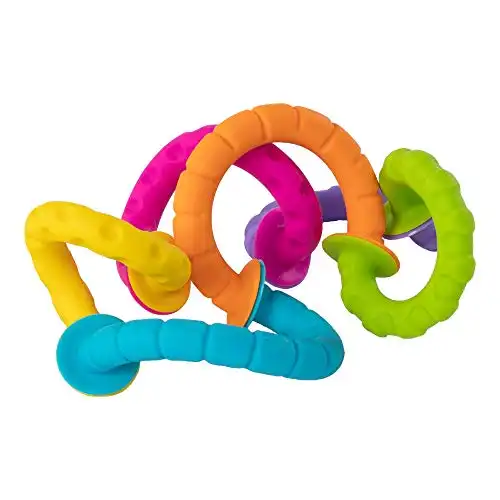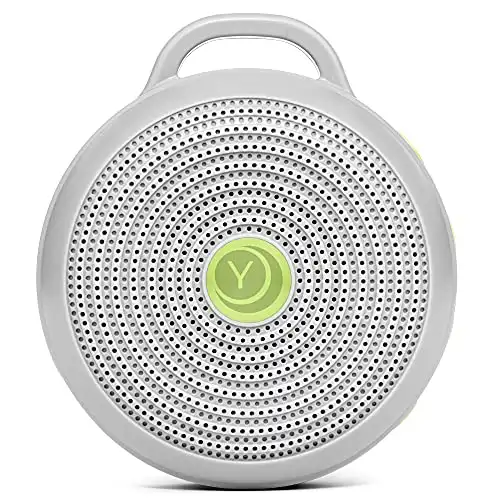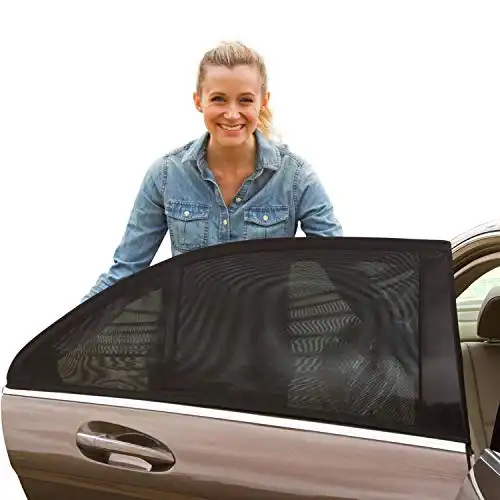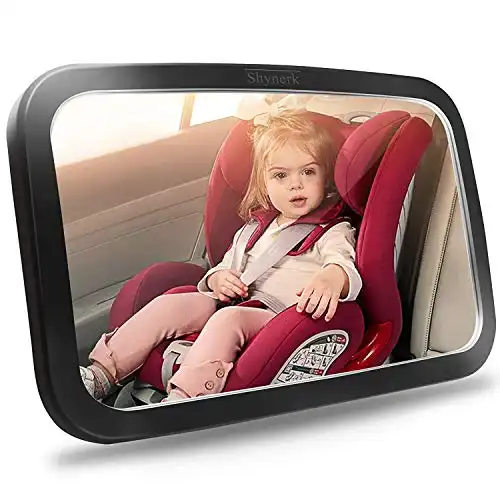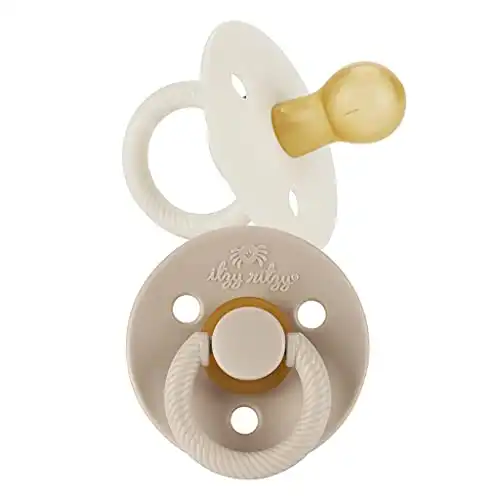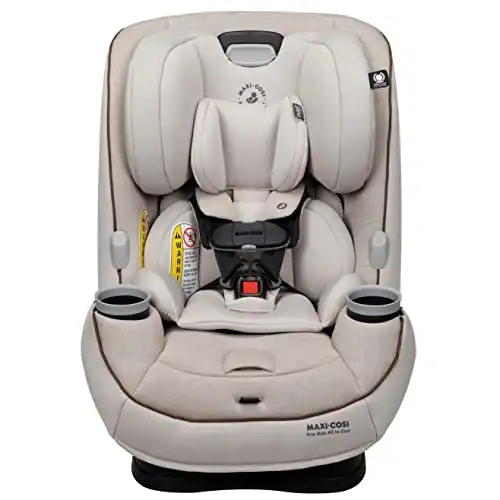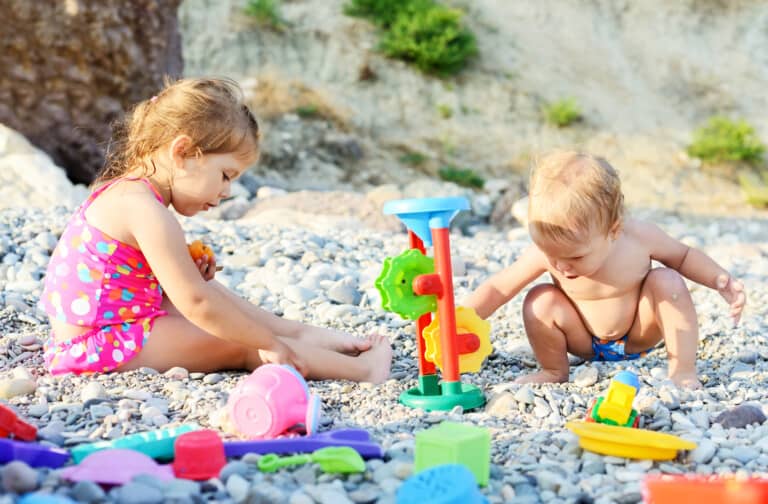9 Reasons Why Your Baby Hates the Car Seat (+ How to Help)
Disclosure: This post may contain affiliate links, which means I may receive a small commission if you click a link and purchase something. Please check out my disclosure policy for more details. All opinions are my own!
I wanted to chat with you today about a topic that many of us can relate to: why your baby hates the car seat.
My 10 month old has been through two stages of crying and screaming in the car, and I have struggled every time with how to help him.
If you’ve ever experienced the agony of a screaming infant in the back seat while you’re trying to drive, you know exactly what I’m talking about.
It can be incredibly frustrating and can make even the shortest car trips feel like an eternity.
Now, before we dive into this, I want to assure you that there’s good news.
You’re not alone in this struggle, and there are things you can do to make car rides a little more bearable for both you and your little one.
So, let’s explore some potential reasons why your baby might be having a hard time in the car seat and discuss some tips and tricks that might help.
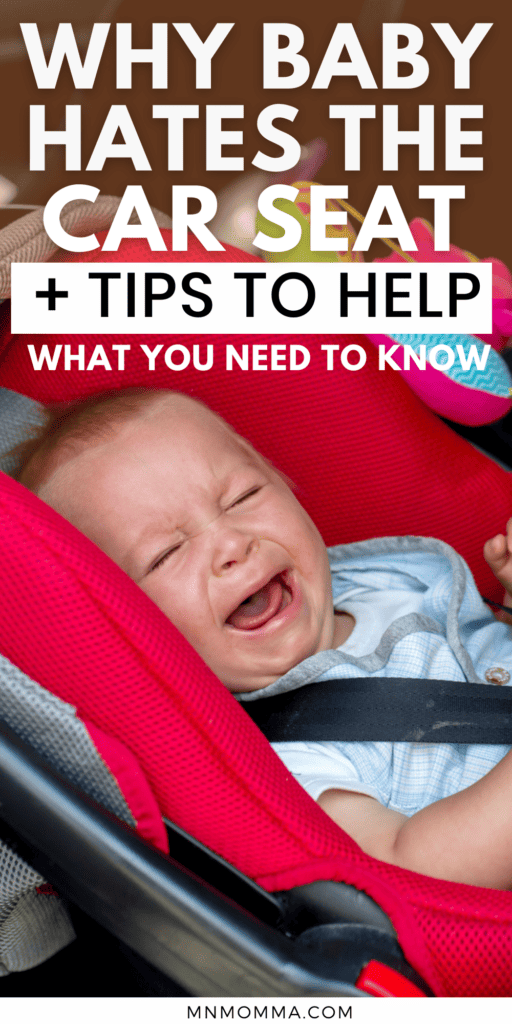
<— Pin it! Save this post for later!
Is it normal for babies to hate car seats?
Yes, unfortunately. 🙁
It’s fairly common for babies to dislike or even hate their car seats.
It’s important to remember that infants have different personalities, preferences, and sensitivities, so their reactions to certain situations, including being in a car seat, can vary.
While some babies may be perfectly content and even enjoy car rides, others may fuss, cry, or express their discomfort.
Just remember, you’re not the only one with a sad baby in the backseat.
There are several reasons why babies might dislike car seats and we’ll mention a bunch of them below.
Hopefully some of these tips can help ease your babies dislike for the car seat and make for a more peaceful ride for the whole family.
Usually this phase is temporary, and as your baby grows and develops, they may become more used to the car and might even start enjoying car rides.
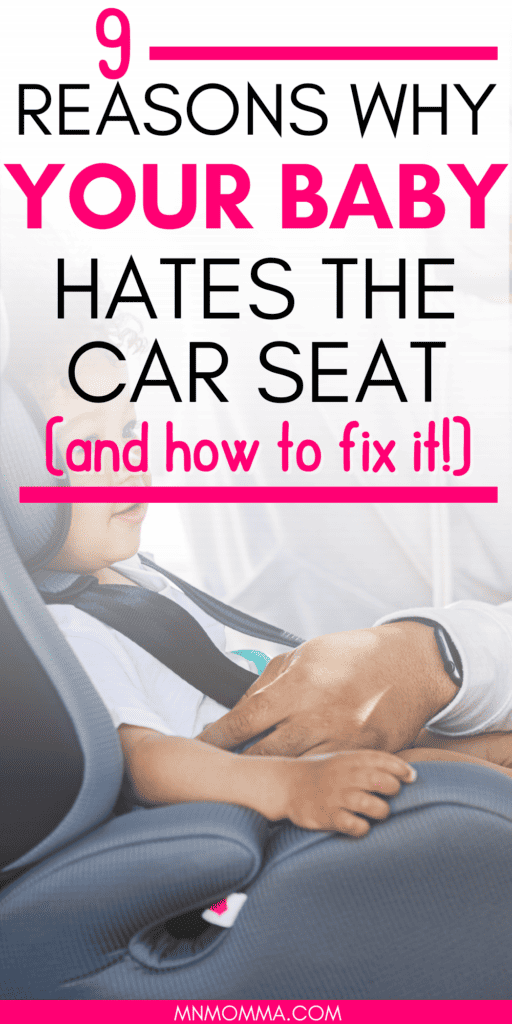
9 Reasons Why Your Baby Hates the Car Seat
Now that you know it can be normal for babies to hate their car seat, let’s talk about a few of the reasons why getting in their car seat can be so terrible for your baby.
1. Motion sickness
Some babies are more sensitive to motion than others.
Just like how some adults get queasy on long car rides, little ones can experience motion sickness too.
It’s not a pleasant feeling, and it can definitely make car rides a challenge.
If this is the case, it might help to position your baby’s car seat in the middle of the back seat, where they can feel less of the swaying motion.
2. Reflux or other tummy upsets
Some babies are diagnosed with reflux or other tummy issues that can become worse in the car seat, which can lead to fussiness, crying, and overall unhappiness.
The angle at which your baby is positioned in the car seat can make a difference, and a slightly elevated position might provide some relief.
Check the guidelines for your specific car seat model to see if it allows for any adjustments in recline angle.
However, it’s crucial to ensure that the car seat is still installed properly and that your baby is securely strapped in.
You can also try to avoid feeding your baby immediately before a car ride, as a full tummy can worsen reflux symptoms.
Be sure to consult with your pediatrician for specific guidance tailored to your baby’s needs, as they can provide medical advice and recommend appropriate solutions.
A chiropractor can also be a huge help to many families to make sure baby is properly adjusted and as comfortable as can be while sitting in the car seat.
3. Negative association
You know how sometimes we create associations with certain things based on past experiences?
Well, babies are no different.
If your little one had a crying fit or an uncomfortable experience in their car seat in the past, they might associate it with negative feelings.
My poor 10 month old cries as soon as he sees me open the car door.
He knows what’s coming, and he’s already not happy.
4. Lack of visual stimulation
Rear-facing seats are the safest option for young children, but they don’t always provide the best view.
Babies are naturally curious and want to see what’s going on around them.
Imagine being strapped in, unable to see anything except the back of the seat in front of you.
It can get pretty boring!
It’s a good idea to have a variety of safe toys on hand for your little one to play with during car trips, like these:
- This teething toy
- Kick and Play Activity Center
- Foot and wrist rattles
- Soft pop its
- Plush animals
- Teething ring
- Wringlet teether
Soft toys, a mirror strapped to the back of the seat, or toys with suction cups that stick to the tray can be great options.
Just make sure to avoid anything that could become a choking hazard or potential projectile in case of sudden stops.
Car Toys:
5. Discomfort
Think about it – sitting in the same position for a long time can be uncomfortable for anyone, including babies.
And if a part of your strap is digging in, or if your seat isn’t adjusted properly the ride is suddenly WAY worse.
Unfortunately, most babies can’t tell us in words when they’re uncomfortable, so we just have to vigilant in checking things over and making sure that we’ve got the best car seat for OUR baby and that it’s installed correctly and comfortably.
6. Separation anxiety
Babies just love you a whole awful lot.
They crave the presence of their parents or caregivers and when they can’t see you and feel alone, it can trigger separation anxiety.
Try to reassure them that you’re still there or put an older sibling nearby who can help them not feel so alone.
You can also try singing songs or chatting with your baby from the front seat.
For some babies that little bit of extra acknowledgement can make a world of difference, but for others (like mine!) it could just make them more upset that they can hear you, but not be with you.
7. Feeling restricted
Babies love to move and explore.
They want the freedom to wiggle, stretch, and kick their little legs.
And being confined to a car seat just might not be their jam.
If your baby is feeling restricted and frustrated, making regular stops on long car rides might be able to help.
8. Sensory overload
Most of us are pretty used to riding in a car by now that we don’t even notice all the sensory experiences happening around us.
Imagine being a baby, strapped into a seat, and bombarded with loud noises, vibrations, and unfamiliar surroundings.
It can be pretty overwhelming and could lead to a meltdown.
For some babies, even the slightest honk or a bumpy road can startle them and make them cry.
You can try using white noise machines or playing soft music in the car to drown out some of the external noises and create a more soothing environment.
9. Disruption of routine
Babies thrive on routine, and any deviation from their usual schedule can throw them off.
So if you’re running errands or going on trip over nap time or lunch time, your baby might not be happy with you.
They can become overtired and cranky, making the car ride even more of a challenge.
To combat this, when possible, you might want to consider planning trips around nap time or baby’s feeding schedule.
On the contrary, sleeping babies are generally happy travelers, so you might have better luck with a peaceful car ride if your little one is snoozing away.
Plus, it gives you a little time to enjoy some quiet and catch up on your favorite podcast or audiobook.
10. Uncomfortable temperature
Finally, let’s talk about the temperature of the car.
Temperature plays a big role in a baby’s comfort level (just like it would for you and I).
If the car seat material is too hot, sticky, or causes the baby’s skin to become sweaty, they may feel uncomfortable and dislike being in it.
During the summer months, consider dressing your baby in light, breathable clothing, and keeping the sun off of baby with a sunshade or window covering.
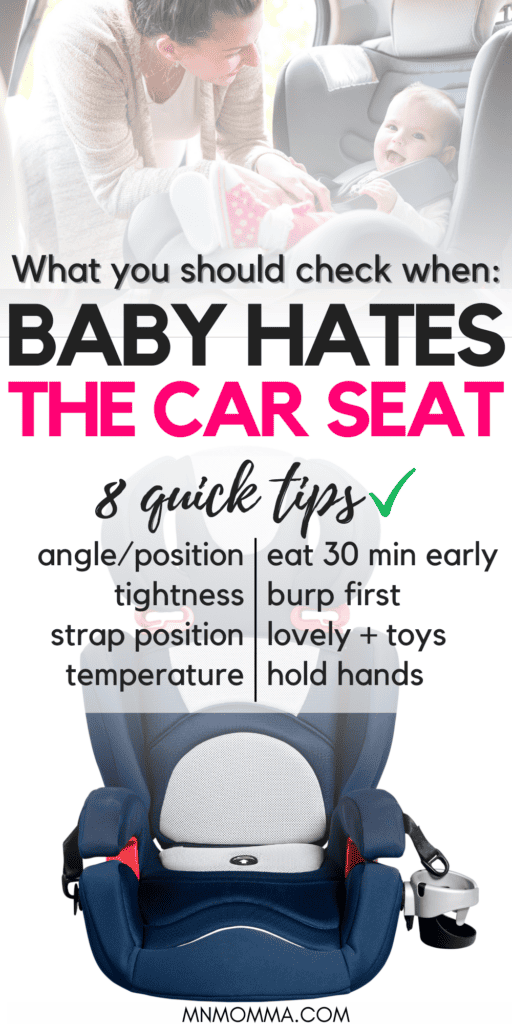
How to Calm a Baby Who’s Unhappy about Being in the Car Seat
So now that you know what could be causing your baby to be mad in the car seat, what can you do to calm your baby down?
Before we get to the tips on how to calm your baby down, be sure to try to calm yourself down.
It can be SO hard to not be super stressed when all you hear is a baby screaming for 20 minutes (or more).
Take a deep breath, say a prayer, listen to some calming music, and remind yourself that your baby is where they need to be during the car ride.
Now that you’re more calm – let’s talk about getting your baby calmed down.
These strategies can help turn those car journeys into a more pleasant experience for everyone involved.
Here are a few ideas to get you started:
1. Check and Adjust the Car Seat
One of the most important things you should do when your baby is having a hard time in the car seat is to check and make sure the car seat is installed properly.
This includes:
- Check the angle of the seat
- Check the straps – are they digging into baby? Is the crotch strap underneath baby? Are the shoulder straps too low or too high?
- Check the LATCH system/seat belt to ensure that it’s secured correctly
Checkout your car seat manual or look into Safe Kids Worldwide to find an inspection technician near you.
2. Favorite Songs
Play your baby’s favorite songs or nursery rhymes during the car journey.
Music has a magical way of soothing and entertaining little ones, plus, it can be a great opportunity for you to sing along and bond with your little passenger.
I’ll never forget the first time we sang the ABC’s to my son in the car.
Little did we know it was one of his favorite songs, and he went from fussing to squealing with delight in no time.
3. Positive Association
We talked about those darn negative associations with the car above, so now let’s talk about the positive ones you can make.
Try to create a positive association with the car seat by incorporating enjoyable activities while your baby is in it.
For example, you could have special playtime with their favorite toy or listen to a fun audible story or children’s nursery rhyme songs (we have an Amazon music account and LOVE the different curated playlists and available songs).
4. Better View
If your baby is in a rear-facing car seat, they might feel left out and unable to see what’s happening around them.
Consider attaching a mirror to the backseat that allows them to see their reflection or position their car seat in a way that provides a better view of the surroundings.
The latter isn’t always possible, but when you can safely do it, it might be worth it.
A mirror can be great however, since babies are hitting tons of developmental milestones and often love to giggle and coo at their own reflection.
It can keep them entertained and made car rides much more enjoyable.
5. Give Toys, Books, or A Lovey
For longer car trips, consider creating a mini play area within reach of your baby’s car seat.
Lay down a small play mat and provide a variety of toys that are safe for car rides.
This can help keep them engaged and entertained throughout the journey.
Exploring different textures, sounds, and toys can keep their minds off the discomfort of the car seat.
Also, if your baby has a favorite blanket or toy that they can safely bring in the car, this can make all the difference.
6. Take Breaks
If your baby fusses during a long trip, it’s a good idea to schedule regular breaks for feeding, changing diapers, or simply stretching their little legs.
Getting out of the car seat for a short time can work wonders in restoring their happiness.
And don’t forget, a break just for snuggles can be helpful too!
7. Hold Baby’s Hand
Remember those poor little baby’s that are going through separation anxiety?
Providing physical comfort and attention can make a big difference to them.
If it’s safe to do so, hold your baby’s hand or talk to them soothingly during the journey.
Sometimes, all they need is a little reassurance that you’re right there with them and the feel of mom’s hand on theirs can help them feel better and give you a happy traveler.
8. Wait After Meals
If reflux or other tummy issues are or could be the problem your baby is unhappy, try to avoid putting your baby in the car immediately after a meal.
Give them at least 30 minutes to settle their stomaches before going for a car ride.
This isn’t always possible, but it’s definitely something you’ll want to try next time to see if you can make your baby more comfortable.
9. Get the Gas Out
Just like waiting to drive your baby around after meals, always try to give them a good burp before putting them in the car.
This can especially be an issue for colicky babies or those with acid reflux.
Gas can buildup and just sit in baby’s tummy due to the position of most car seats.
Attempting one last burp before buckling your baby in gives them the best chance to be as comfortable as possible before going for a drive.
10. Offer A Paci
If your baby is willing to take a pacifier, it just might help.
Sometimes simply the extra comfort provided from sucking on a pacifier can help your baby get through a car ride and start to become more comfortable in their car seat.
11. Look Into A New Car Seat
If all else fails, you may need to think about looking into a new car seat.
While all car seats have to pass a certain level of safety rating, they aren’t all created equal.
Some car seats will have more padding, be more roomy, or be easier to install correctly.
This all means that some more particular babies will have a preference for a likely more expensive or different car seat.
Remember, that the best car seats don’t have to be super expensive. Check out this list of 9 budget friendly convertible car seats.
12. Seek Professional Advice
Lastly, take a deep breath and remember that every baby is unique and sometimes these tips just won’t work.
If you find you still aren’t able to calm your baby in the car seat, don’t hesitate to reach out to a chiropractor, family therapist, or consult with your pediatrician for additional support and guidance.
They may have excellent tips that will work best for your baby’s current age and specific struggles.
FAQ
When do babies grow out of hating the car seat?
When it comes to babies and their relationship with the car seat, every child is different.
Some babies may outgrow their dislike for the car seat relatively quickly, while others may take more time to adjust.
Generally, as babies grow older and become more accustomed to car rides, they tend to become more tolerant of the car seat.
Keep in mind, however, your child’s temperament in the car seat may ebb and flow.
Some babies seem to grow out of hating the car seat, only to cry again a few months later due to having hit the developmental milestone of separation anxiety.
Is it okay to let baby cry in car seat?
It’s important to note that the safety and well-being of your baby should always be the top priority.
While it can be absolutely awful to hear your baby cry in the car seat, it’s where they HAVE to be while riding in the car.
Try your best to mitigate their distress with the tips above and talking with your doctor.
How do you travel with a crying baby?
If you’re faced with a crying baby during car rides, here are a few tips to try:
- Address the basics: Ensure that your baby’s basic needs are met before hitting the road. Are they well-fed, changed, and well-rested?
- Create a soothing environment: Play calming music, use a pacifier, and try to keep the car ride low stress
- Offer comfort and reassurance: Hold your baby’s hand, talk to them soothingly, or sing their favorite lullaby. The sound of your voice and your gentle touch can make a difference.
- Check the fit, comfort, and temperature: Make sure the car seat is installed correctly and baby isn’t in any pain from the seat. Check the temperature of the vehicle and make sure your baby is dressed appropriately.
- Plan for breaks: If possible, plan your road trip with breaks in mind. Take regular breaks to feed, change diapers, or just get out and stretch (yes, even for baby!). It can provide much-needed relief and make the overall journey more manageable.
If you experience a very unhappy baby and none of the tips above help, be sure you’re talking with your baby’s doctor to rule out any medical conditions and find out any tips they have.
Tips for When Baby Hates The Car Seat
Remember, every baby is different, and what works for one might not work for another.
If you’re still struggling despite trying these tips, it might be worth reaching out to your doctor for medical advice or more personalized tips.
They can help you uncover any underlying issues or provide additional strategies tailored to your baby’s specific needs.
I know it’s awful and SO hard to hear your baby cry, but you’ve got this.
With a little patience, experimentation, and some good luck, you’ll find the solution that works best for your baby and your family.
And remember, it won’t be like this forever. Eventually, your little one will outgrow the car seat stage, and you’ll be in for more peaceful car rides in the future!
Related:
- The Best Baby Gear of The Year (That You Don’t Want to Miss!)
- 21 Best Newborn Tips & Hacks to Save Your Sanity
